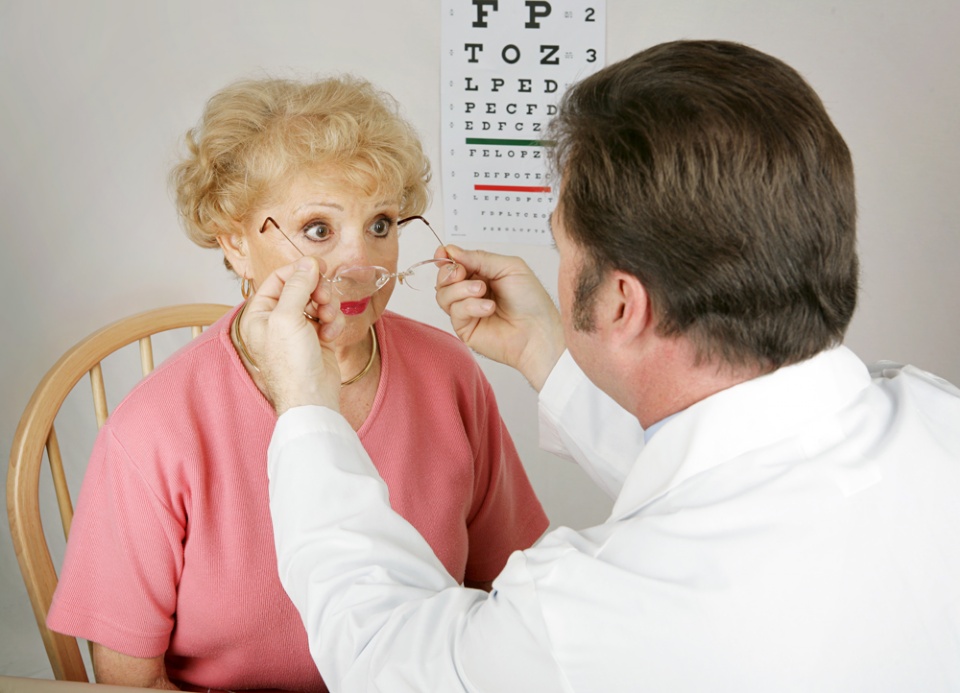Almost everyone will
require cataract surgery at some point in their life. In a healthy clear eye, we
have a natural lens that refracts light which comes into the eye to help us
see. With cataracts, the eye lens becomes cloudy which makes things appear
blurry. Street signs and small print become difficult to read and it is challenging
to drive at night due to eye sensitivity from reflective glare.
Cataracts can appear when
a person is in their 40’s or 50’s but may not affect their vision until after
60. Cataracts may also be due to eye trauma, diabetes, corticosteroid
medication or radiation treatment. In some cases, the effects may be so mild
that vision is barely affected, but in other cases, it can be extremely
debilitating, where the individual cannot see shapes or movements, only light
and dark. Rarely, cataracts appear in
infants and may occur as a result of an infection that happened during
pregnancy.
Cataracts are the world's
leading cause of blindness. In North America, cataracts are most often age-related,
affecting more than half of Americans over 65. Prolonged exposure to
ultraviolet light is also known to cause cataracts. People who smoke may get
cataracts at an earlier age than non-smokers.
Cataracts can develop
quite slowly, usually causing a gradual and painless loss of vision. Some
tell-tale signs of cataract development are blurry vision, glare (especially at
night), frequent changes of eyeglass prescription, a yellowing of images and in
some rare cases, double vision.
Cataract surgery improves
eyesight significantly in 95<>percentage<> of cases and is a safe, effective surgical
procedure.
Traditional
Cataract surgery
In traditional cataract
surgery, the cloudy lens inside the eye is removed and replaced with an
artificial intraocular lens (IOL) to restore clear vision. With modern cataract
surgery techniques, double eye surgery can be completed the same day, the same
week or for a period of time between each eye surgery. Patients also have the
option to choose near or farsighted lenses. There are several types of lenses available
depending on the eye problem.
Traditional cataract
surgery takes 15 minutes and the typical result is long-lasting clear vision. Most
modern cataract procedures use a high-frequency ultrasound device that breaks
up the cloudy lens into small pieces which are gently removed from the eye with
suction. After all remnants of the cloudy lens have been removed, the cataract
surgeon inserts a clear IOL lens, positioning it securely behind the iris and
pupil, the same place your natural lens occupied. The surgeon then completes
the cataract removal and lens implantation by closing the incision in your eye
(a stitch may be needed). A protective plastic shield is placed over the eye to
keep it safe the first day of surgery and is worn at night for one week. The
surgeon will recommend eye drops to be used for one month. This surgery is
performed on an outpatient basis and does not require a hospital stay. Recovery
takes about one month.
Cataract surgery may be
performed in a hospital environment; basics are covered by Medicare. One may
opt to pay for surgery at a private clinic because waiting time for surgery at
a hospital may be lengthy.
Laser
Surgery
The new laser option produces
a perfectly round cut of the desired size, centered over the capsular bag. This
method uses less energy to fragment the cataract than the ultrasound in
traditional surgery. Both eyes can be done the same day. Advantages are one
trip for both surgeries, one appointment requiring someone to accompany you and
post-operative follow-up to be completed at the same time. Postoperative
results are excellent, but laser surgery is more costly.
If you notice that your
vision is blurry, it is best to see to see your eye specialist, as cataract
cloudiness will worsen with time.

 In The Latest Issue:Latest Issue:
In The Latest Issue:Latest Issue:
- Celebrating Community an...
- Celebrating the Unsung H...
- Understanding Newborn St...
Articles
Calendar
Virtual- ANNUAL TEACHER APPRECIATION CONTEST
- APPUI LAVAL
- ARTS & CULTURE
- CAMPS
- CAR GUIDE
- CCIL
- CENTENNIAL ACADEMY
- CHARITY FUNDRAISING
- CITYTV
- COSMODÔME
- COMMUNITY CONNECTIONS
- COVER STORY
- DINA DIMITRATOS
- ÉCOLE SUPÉRIEURE DE BALLET DU QUÉBEC
- EDITORIALS
- ÉDUCALOI
- EDUCATION
- EMPLOYMENT & ENTREPRENEURSHIP
- FÊTE DE LA FAMILLE
- FÊTE DU QUARTIER SAINT-BRUNO
- FAMILIES
- FESTIVAL LAVAL LAUGHS
- FÊTE DE QUARTIER VAL-DES-BRISES
- FINANCES
- GLI CUMBARE
- GROUPE RENO-EXPERT
- HEALTH & WELL-BEING
- 30 MINUTE HIT
- ANXIETY
- CHILDREN`S HEALTH & WELLNESS
- CLOSE AID
- DENTAL WELLNESS
- EXTREME EVOLUTION SPORTS CENTRE
- FONDATION CITÉ DE LA SANTÉ
- GENERAL
- HEARING HEALTH
- MESSAGES FROM THE HEALTH AGENCY OF CANADA
- MENTAL HEALTH
- SEXUALITY
- SOCIAL INTEGRATION
- SPECIAL NEEDS
- TEENS
- THE NUTRITION CORNER
- THE NUTRITION CORNER - RECIPES
- VACATION DESTINATION
- WOMEN'S FITNESS
- WOMEN'S HEALTH
- HILTON MONTREAL/LAVAL
- HOME & GARDEN
- INTERNATIONAL WOMEN'S DAY
- JAGUAR LAVAL
- LAVAL À VÉLO
- LAVAL FAMILIES TV SHOW
- LAVAL FAMILIES MAGAZINE CARES
- LAVAL URBAN IN NATURE
- LE PARCOURS DES HÉROS
- LES PETITS GOURMETS DANS MA COUR
- LEON'S FURNITURE
- LEONARDO DA VINCI CENTRE
- LFM PREMIERES
- LIFE BALANCE
- M.P. PROFILE
- MISS EDGAR'S AND MISS CRAMP'S SCHOOL
- MISSING CHILDREN'S NETWORK
- NETFOLIE
- NORTH STAR ACADEMY LAVAL
- OUTFRONT MEDIA
- PASSION SOCCER
- PARC DE LA RIVIÈRE-DES-MILLE-ÎLES
- PÂTISSERIE ST-MARTIN
- PIZZERIA LÌOLÀ
- PLACE BELL
- PORTRAITS OF YOUR MNA'S
- ROCKET DE LAVAL
- SACRED HEART SCHOOL
- SCOTIA BANK
- SHERATON LAVAL HOTEL
- SOCIÉTÉ ALZHEIMER LAVAL
- STATION 55
- STL
- SUBARU DE LAVAL
- TECHNOLOGY
- TEDXLAVAL
- TODAY`S LAURENTIANS AND LANAUDIÈRE
- TODAY`S LAVAL
- WARNER MUSIC
- THIS ISSUE
- MOST RECENT
Magazine
Seeing Life More Clearly
Articles ~e 105,7 Rythme FM 4 chemins Annual Teacher Appreciation Contest Appui Laval Arts & Culture Ballet Eddy Toussaint Camps THIS ISSUE MORE...
CONTESTS Enter our contests
CONTESTS Enter our contests
CALENDAR
Events & Activities
COMMUNITY Posts Events
PUBLICATIONS Our Magazine Family Resource Directory
LFM BUSINESS NETWORK Learn more
COUPONS Click to save!
COMMUNITY Posts Events
PUBLICATIONS Our Magazine Family Resource Directory
LFM BUSINESS NETWORK Learn more
COUPONS Click to save!
SUBSCRIPTIONS
Subscribe to the magazine
Un-Subscribe
E-NEWSLETTER Subscribe to our E-newsletter Un-Subscribe
WRITE FOR US Guidelines & Submissions
POLLS Vote today!
E-NEWSLETTER Subscribe to our E-newsletter Un-Subscribe
WRITE FOR US Guidelines & Submissions
POLLS Vote today!
ADVERTISERS
How to & Media guide
Pay your LFM invoice
SUGGESTIONS Reader's Survey Suggest a Listing
LFM About Us Our Mission Giving Back Contact Us
SUGGESTIONS Reader's Survey Suggest a Listing
LFM About Us Our Mission Giving Back Contact Us
 PICK-UP LOCATIONS
Get a copy of LFM!
PICK-UP LOCATIONS
Get a copy of LFM!
TERMS & CONDITIONS Privacy | Terms
ISSN (ONLINE) 2291-1677
ISSN (PRINT) 2291-1677
Website by ZENxDESIGN



 BY:
BY: 


Tweet
Share